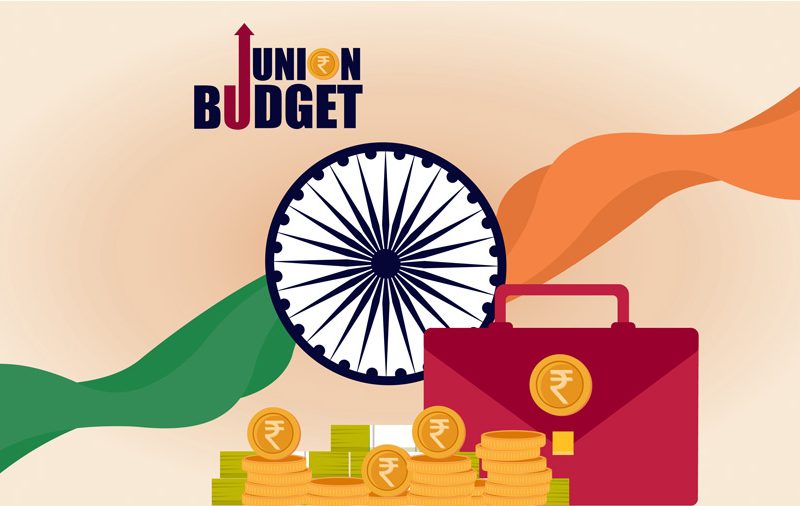Union Budget 2025
Finance Minister Nirmala Sitharaman presented the Union Budget for 2025-26 on February 1, 2025, outlining a comprehensive strategy to accelerate economic growth. The budget revolves around four major pillars: Agriculture, MSMEs, Investments, and Exports. The government has laid significant emphasis on inclusive and sustainable development, aiming for a Viksit Bharat (Developed India) by 2047.
Agriculture Reforms and Initiatives
- Mission for Aatmanirbharta in Pulses: A six-year program to boost self-reliance in pulse production, focusing on crops like tur/arhar (pigeonpea), urad (black gram), and masoor (red lentil).
- Makhana Board in Bihar: Establishment of a Makhana Board to assist 10 lakh individuals through Farmer Producer Organizations (FPOs) to enhance production, processing, and marketing.
- Rural Prosperity and Resilience Program: Collaboration with state governments to provide skill training, investments, and technology to boost rural employment.
- High-Yielding Seeds Mission:
- Development of high-yield, pest-resistant, and climate-resilient seed varieties.
- Commercial rollout of 100+ new seed varieties since July 2024.
- Mission for Cotton Productivity: A five-year initiative to enhance cotton farming sustainability and promote extra-long staple (ELS) cotton.
- Fisheries Development: Introduction of sustainable fishing projects, particularly in Andaman & Nicobar and Lakshadweep.
- India Post as a Rural Economy Catalyst: Transformation of India Post and India Post Payments Bank into a significant logistics network.
- Kisan Credit Card (KCC) Loan Expansion: Loan limit increased from ₹3 lakh to ₹5 lakh under the Modified Interest Subvention Scheme.
- PM Dhan Dhanya Krishi Yojana (PMDDKY):
- Integrates existing farming schemes and partners with state governments.
- Targets 100 districts with below-average agricultural output.
- Key focus areas: increasing production, promoting diverse cropping, improving storage facilities, enhancing irrigation, and providing easy loan access.
- Estimated to benefit 1.7 crore farmers nationwide.
- New Urea Plant in Assam: With an annual production capacity of 12.7 lakh tonnes, this marks the seventh new urea plant since 2019.
MSME Support and Growth Initiatives
- Enhanced MSME Classification: Investment and turnover limits increased by 2.5x and 2x, respectively.
- Improved Credit Access:
- Micro & Small Enterprises: Credit guarantee increased from ₹5 crore to ₹10 crore.
- Startups: Guarantee coverage raised from ₹10 crore to ₹20 crore.
- Exporter MSMEs: Term loans up to ₹20 crore.
- Udyam Credit Cards: Customized ₹5 lakh credit cards for MSMEs (10 lakh cards in the first year).
- Expanded Startup Fund of Funds: Additional ₹10,000 crore allocated, with government-backed AIFs committing ₹91,000 crore to startups.
- Support for Women & SC/ST Entrepreneurs: New scheme offering ₹2 crore term loans to first-time business owners.
- National Action Plan for Toys: Strengthening India’s toy manufacturing industry under ‘Make in India’.
- National Manufacturing Mission:
- Support for MSMEs and large enterprises in clean technology manufacturing (solar panels, EV batteries, wind turbines, etc.).
- Aims to reduce China’s dominance in clean tech, which currently holds 80% of the market share for batteries and solar components.
Investment and Infrastructure Expansion
- Jal Jeevan Mission Extension: Ensuring 100% water supply coverage by 2028.
- Urban Challenge Fund: ₹1 lakh crore allocated to enhance urban development.
- Nuclear Energy Mission:
- Plans to develop 100 GW of nuclear energy capacity by 2047.
- Amendments to Atomic Energy Act and Civil Liability for Nuclear Damage Act to attract private investment.
- Deployment of five Small Modular Reactors (SMRs) by 2033.
- Shipbuilding Development:
- Revised Shipbuilding Financial Assistance Policy with a ₹18,000 crore allocation.
- ₹25,000 crore Maritime Development Fund for shipbuilding and maritime projects.
- Establishment of shipbuilding clusters to enhance technology and infrastructure.
- Regional Air Connectivity (UDAN Scheme): Expansion with 120 new destinations and infrastructure support for remote areas.
- Deep Tech Fund of Funds: Investment in advanced technology startups and 10,000 PM Research Fellowships at IITs/IISc.
- National Geospatial Mission: Digital mapping advancements to improve governance.
- Gyan Bharatam Mission: Increased funding for the National Manuscripts Mission to digitize and preserve historical texts.
Export Promotion and Trade Facilitation
- Export Promotion Mission: ₹2,250 crore allocated to support export growth and simplify non-tariff barriers.
- BharatTradeNet: A unified digital platform for trade documentation and financing.
- GCC National Framework: Focused on boosting Global Capability Centres in Tier-II cities to decentralize back-office operations.
- Air Cargo Infrastructure Enhancement: Faster customs clearance for perishable goods.
Tax Reforms and Relief Measures
- Income Tax Exemption: No tax on income up to ₹12 lakh; salaried individuals can benefit up to ₹12.75 lakh with standard deductions.
- Extended Return Filing Window: Updated tax returns can now be filed up to 48 months.
- Tax Exemption for Senior Citizens: Withdrawals from National Small Savings (NSS) accounts post-August 29, 2024, are tax-free.
- Lower TDS and TCS Rates:
- TDS on rent now applies only for rents above ₹6 lakh annually.
- No TCS on education remittances from loans; threshold for TCS on overseas remittances raised to ₹10 lakh.
- Investor Benefits:
- ₹50,000 NPS deduction under NPS Vatsalya scheme.
- Reduced TDS on dividend income (threshold: ₹10,000).
- Reduced customs duty on life-saving drugs and essential medical supplies.
Social Sector Allocations
- Education Budget: Increased to ₹1.28 lakh crore, up from ₹1.14 lakh crore in 2024-25.
- Rural Development: ₹2.66 lakh crore allocated.
- Health Budget: Raised to ₹98,311 crore from ₹88,032 crore in 2024-25.
- Social Sector Spending Growth:
- Expected to reach ₹25.7 lakh crore in FY25, up from ₹14.8 lakh crore in FY21.
Gender Budgeting and Women-Centric Policies
- Women-Centric Allocations: ₹4.49 lakh crore allocated, a 37% increase from the previous year.
- Key Women-Focused Programs:
- 47% of MGNREGS budget directed to women.
- 31% of Jal Jeevan Mission funding benefits women.
- Pradhan Mantri Awaas Yojana-Grameen (PMAY-G) ensuring property ownership for women.
- Challenges in Gender Budgeting:
- Need for improved transparency and regular gender audits to ensure equitable fund distribution.
The Union Budget 2025 is a bold step towards economic resilience, infrastructure expansion, and inclusive development. While implementation challenges remain, the government’s commitment to reforms and growth-oriented policies sets a strong foundation for India’s future.












